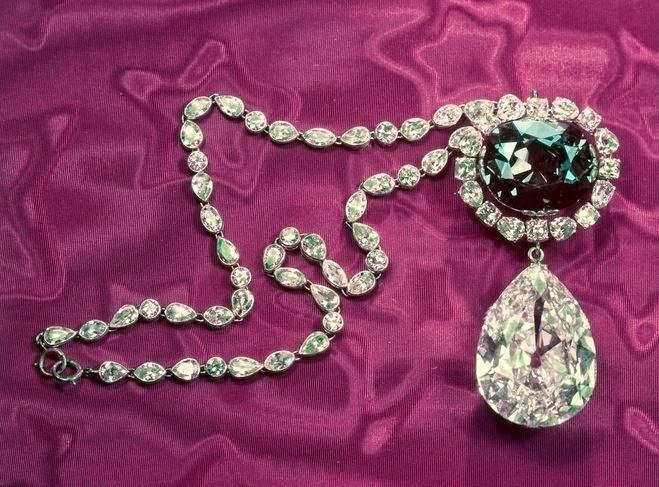Type of stone Diamond Country of origin Unknown | Cut Pear Mine of origin Unknown | |
 | ||
Similar Moon of Baroda, Dresden Green Diamond, Tavernier Blue | ||
Top 8 Expansive Gifts in The World | ALL INFORMATION TV |
The "Star of the East" is a 94.80-carat (18.8 g), pear-shaped, D-color stone of unknown clarity grade. Its exact origin is unknown but it likely originated from India. The origin of its name and year of discovery are also unknown. The diamond was part of the collection of the jewelry-loving Sultan of the Ottoman Empire, Abdul Hamid II. It later made it into the hands of Pierre Cartier, who sold it to Evalyn Walsh McLean. After Mclean's death, Harry Winston purchased the diamond together with Mclean's entire collection. The diamonds current whereabouts are unknown.
Contents
- Top 8 Expansive Gifts in The World ALL INFORMATION TV
- History
- Confusion with the Ahmedabad diamond
- References

History
The Star of the East's exact origin is unknown, but it likely originated from one of the five groups of mines that were situated on the eastern side of the Deccan Plateau in Southern and Central India. The stone first surfaced in the collection of the Sultan Abdul Hamid. It was later acquired by Pierre Cartier. In 1908, Evelyn Walsh McLean, on a honey moon with her husband Edward Beale McLean, purchased the stone from Cartier. The Star of the East then remained in McLean's hands for about 40 years until her death. According to an article in the Southern Inspired Magazine, McLean died wearing the Star of the East, as well as the Hope Diamond. After her death, the star of the East together with the Hope Diamond were sold to Harry Winston, an American jeweler later known for donating the Hope Diamond to the Smithsonian Institution.
Winston sold the Star of the East to King Farouk of Egypt, but never received payment for it. Several years after King Farouk's overthrow in 1952, the Egyptian government recognized Winston's claim and the stone was eventually returned to him.
Harry Winston sold the Star of the East once again.
The Star of the East was displayed at the Museum of Modern Art, New York, at a reception marking the 50th anniversary of Harry Winston, Inc.
The star of the East came once again into Winston's ownership.
The Star of the East's present whereabouts are unknown
Confusion with the Ahmedabad diamond
In 1983, an article about Harry Winston appeared in the Gems & Gemology magazine. In the section about the Star of the East, the magazine Stated:
The Star of the East is believed to have been originally the Ahmedabad, a 157.25-ct rough diamond purchased in India in the mid-17th century by Tavernier, the French gem merchant. He later had it Cut to a 94.78-ct pear shape and reportedly disposed of it in Persia. It then resurfaced in the 19th century in the possession of Sultan Abdul Hamid II of Turkey, who also owned the Hope diamond. (Krashes, 1983).
Since the stones are both pear shaped, D-color, believed to be of Indian origin, similar in weight and have some unknown whereabouts, it is easy to understand why they were confused one for another. However, the confusion was resolved when in November 1995 the real Ahmedabad was offered for sale at Christie's in Geneva, and later bought by Robert Mouawad for $4,324,554.
